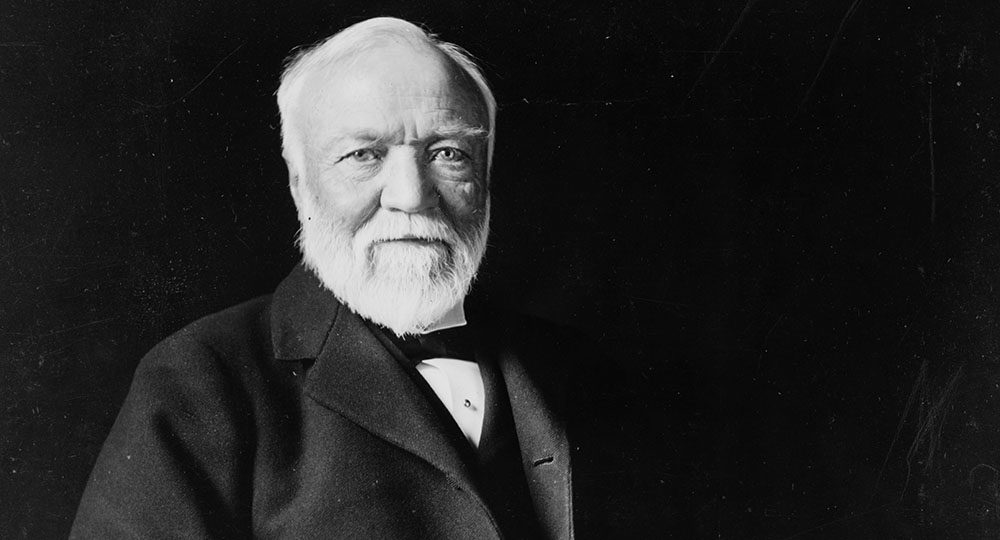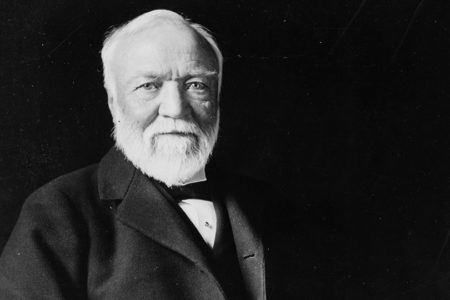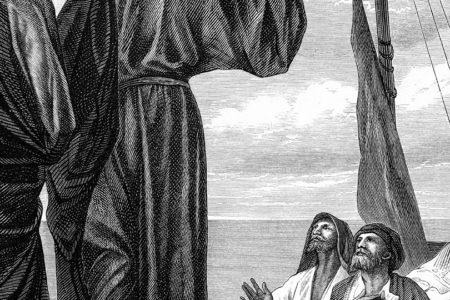Someone to Believe In
A look at what it takes to make a hero
My wife enjoys watching Antiques Roadshow, a popular television program where appraisers provide the monetary value of something you may have had in your attic for years. I usually read while it’s on, but one item recently caught my attention—the Carnegie Medal. It was minted for the Carnegie Hero Fund Commission started by Andrew Carnegie, the famous Scottish-American industrialist and philanthropist who died in 1919.
I wasn’t paying close attention until I heard, “Encircling the medal are the words from John 15:13: ‘Greater love hath no man than this, that a man lay down his life for his friends’” (KJV). Suddenly, I became extremely interested. What was the medal for? How many were minted? Who were the recipients?
And so began a journey that led not only to answers about the medal but also to a deeper connection with the life of our Savior and our current culture, which is in such desperate need of Jesus.
The Story Begins
Daniel Lyle and Selwyn Taylor became heroes on a frigid January morning in 1904. They had not planned it, nor did they have any superpowers, fancy capes, uniforms, or masks. But on that January morning, they heard a huge explosion coming from the Harwick coal mine (about 12 miles from Pittsburgh, Pennsylvania) and immediately, almost instinctively, ran from two different places to the mine.
When Taylor, a mining engineer, arrived at the site, he quickly descended the main shaft and found 17-year-old Adolph Gunia alive but severely burned. As it turned out, Gunia would be the only one to survive the explosion. As Taylor descended farther, he was overcome by afterdamp, an asphyxiating gas. As a result, he died the next day, leaving a wife and stepson.
Lyle, a coal miner, began working on a rescue team. He, too, descended into the shaft, going down farther than any other person on the team. He, too, was overcome by afterdamp and died, leaving a wife and five children. In all, 181 people died. The tragedy remains one of America’s worst mining explosions.
When Carnegie heard about the accident from his home in New York City, he was profoundly moved. He wrote, “I can’t get the women and children of the disaster out of my mind.” He matched the $40,000 raised by the public for the miners’ families. But it was the stories of Daniel Lyle and Selwyn Taylor that occupied Carnegie’s thinking. He believed them to be heroes.
So within three months, Carnegie established a $5-million trust known as the Carnegie Hero Fund Commission. Its purpose is twofold: “to recognize persons who perform acts of heroism in civilian life in the United States and Canada, and to provide financial assistance for those disabled and the dependents of those killed helping others.”
The commission recognizes “heroes” by issuing a medal and a cash award. Carnegie designed the medal with a bust of himself, encircled by the verse from John 15:13.
50 PEOPLE EVERY CHRISTIAN SHOULD KNOW
Learn about the heroes of our faith in 50 People Every Christian Should Know by Warren W. Wiersbe.
Today, 114 years later, the Carnegie Hero Fund Commission continues to look for heroes like Taylor and Lyle. A 21-member commission in Pittsburgh is charged with the responsibility of recognizing these “heroes of civilization.” To date, nearly 10,000 medals have been awarded, along with approximately $40 million in one-time grants, scholarships, death benefits, and continuing assistance. The commission’s working definition of a hero is “a person who’s under no obligation to act, leaves a place of safety, puts himself or herself in serious risk of death or major injury to save the life of another human being.”
Carnegie believed in heroes. He saw Taylor and Lyle’s meritorious actions and knew there would be others like them. Today we see many acts of heroism following terrorist attacks. Stories abound, for example, of heroic acts during the senseless, deathly shooting spree in Las Vegas, Nevada, last year. In each case, individuals were willing to test the limits of their own abilities and become examples of how we all can be better.
The Ultimate Hero
Like Carnegie, we all gravitate to heroic stories. In a September 27, 2017, USA Today article addressing superheroes, writer Brian Truitt quoted entertainment writer Mike Ryan: “Most people just want something to believe in.” In the same article, Jeff Bock, senior box-office analyst for exhibitor relations, said, “People are clamoring for a cut-and-dried true hero.”
Heroes are remarkable. They do remarkable things; and because they stand out when they act, they often are recognized. The apostle Paul wrote, “For scarcely for a righteous man will one die; yet perhaps for a good man someone would even dare to die” (Rom. 5:7). But not one of the nearly 10,000 Carnegie Medal recipients nor any of the thousands or hundreds of thousands of recognized or unrecognized heroes could ever save someone completely. That is, every life saved by an earthly hero must face eternity without that hero.
But there is one hero who is unlike all others—and this is where my journey ends. This hero not only fits the Carnegie Hero Fund Commission criteria perfectly, but He also fits the biblical mandate for Messiah and Savior.
First, a hero is “under no obligation to act.” But act Jesus did, taking on Jewish flesh and blood to become our Kinsman.
Second, he “leaves a place of safety.” Jesus, the second Person of the Godhead, left His place in heaven to be born as a lowly human being on Earth.
Third, he “puts himself…in serious risk of death or major injury to save the life of another human being.” Jesus surrendered His life by shedding His blood for all of us, willingly taking the judgment we deserve for our sins.
Hebrews 7:25 says, “He is also able to save to the uttermost [completely] those who come to God through Him, since He always lives to make intercession for them.” There is no one like our Hero, the Lord Jesus Christ, because as our
Kinsman-Redeemer, His saving power is unlimited.
Jesus received no medal from the Father, but He is alive today and seated next to the Father, making intercession for those He redeemed.
In the preface of his book The Supremacy of God in Preaching, John Piper wrote, “People are starving for the greatness of God.” He is right. People are looking for heroes; but most of them are unaware their real Hero is right there in front of them, if they would only accept Him.







